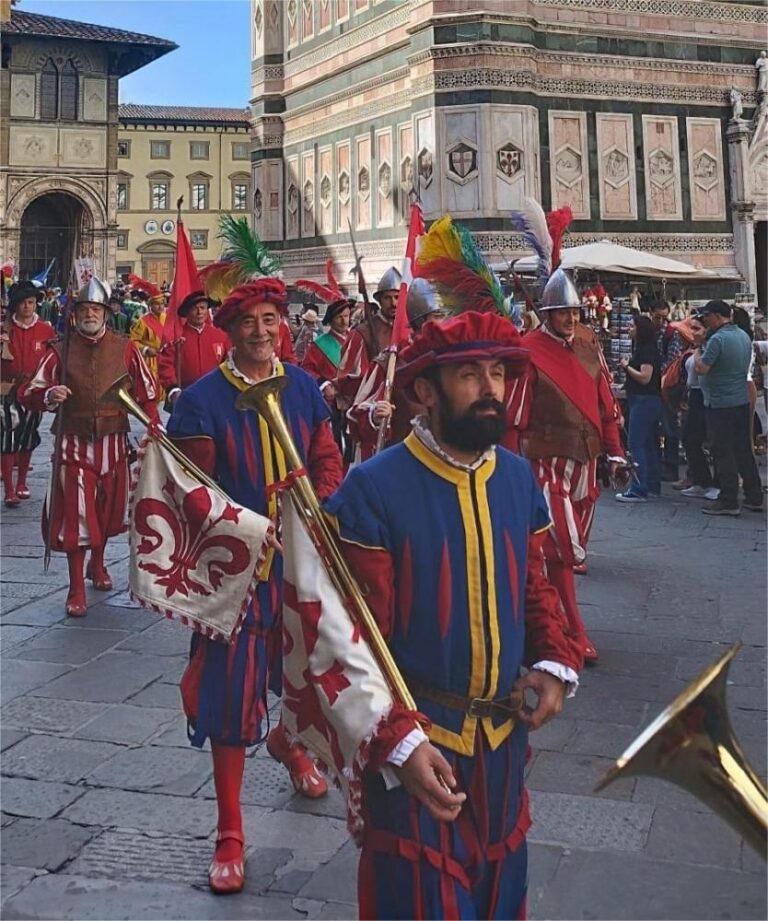⚔️ Il Calcio Storico Fiorentino: Florence’s Fiercest Tradition in Motion
Step into the beating heart of Florence, where history collides with adrenaline in one of the most intense spectacles in Europe. Il Calcio Storico Fiorentino, or Historic Football, is not just a game—it’s a centuries-old ritual of pride, power, and passion. Combining the brute force of wrestling, the strategy of rugby, and the spirit of soccer, this ancient sport is a living testament to Florentine identity.
🏛️ Historical Origins: Where Legends Were Born
Dating back to the 16th century, Calcio Storico finds its roots in the Roman game of harpastum. Over time, it evolved into a noble pastime, especially among the Florentine elite. By 1580, the rules were formalized, and the game became a fixture in the city’s cultural life.
Traditionally played in Piazza Santa Croce, the sport has endured through wars, revolutions, and modernity—remaining a proud symbol of Florence’s resilience and unity.
🏟️ The Game: Brutal, Beautiful, and Unapologetically Florentine
Unlike any other sport, Calcio Storico is raw, theatrical, and deeply symbolic. It’s not just about scoring—it’s about defending honor.
🔹 Teams and Colors
Four historic neighborhoods battle for glory:
- Santa Croce (Azzurri – Blues)
- Santo Spirito (Bianchi – Whites)
- Santa Maria Novella (Rossi – Reds)
- San Giovanni (Verdi – Greens)
Each team is a brotherhood of 27 warriors, including goalkeepers, defenders, midfielders, and forwards. These players are not just athletes—they are modern gladiators, trained in strength, agility, and combat.
🔹 The Battlefield
Set in the iconic Piazza Santa Croce, the field is covered in sand and measures roughly 100 by 50 meters. It’s a temporary arena where tradition and tension ignite.
🔹 Rules and Objectives
- Goal: Score more points than your opponent by throwing the ball into the net across the field’s width.
- Scoring: A successful goal is called a caccia. If the ball sails over the net, the opposing team earns half a point.
- Gameplay: Players use both hands and feet to advance the ball. However, brute force is part of the strategy—hand-to-hand combat is not only allowed but expected.
- Duration: Two halves of 50 minutes, separated by a brief intermission.
🎉 The Event: A Festival of Fury and Pride
Held annually in June, Calcio Storico culminates in a dramatic final on June 24th, coinciding with the Feast of San Giovanni, Florence’s patron saint. The entire city transforms into a stage for this historic showdown.
Before the match begins, a grand parade winds through the streets. Participants don elaborate Renaissance costumes, accompanied by drummers, flag bearers, and trumpeters. This ceremonial procession sets the tone for what’s to come—a clash of tradition and testosterone.
🔥 The Atmosphere: Electric, Emotional, Unforgettable
As the sun beats down on Piazza Santa Croce, the crowd roars in anticipation. Spectators, dressed in their neighborhood colors, chant and cheer with fervor. The energy is palpable, the stakes are high, and the pride is real.
From the first whistle to the final caccia, the match is a rollercoaster of emotion. Blood may be spilled, but honor is earned.
🏆 Cultural Significance: More Than a Game
Calcio Storico is not merely a sport—it’s a living embodiment of Florentine heritage. It celebrates values like bravery, loyalty, and unity, passed down through generations. For the players, stepping onto the sand is an act of devotion. For the city, it’s a reaffirmation of identity.
Even today, participating in Calcio Storico is considered a badge of honor, a role reserved for the boldest sons of Florence.
🌟 Conclusion: Witness the Soul of Florence in Action
Whether you’re a sports enthusiast, a history lover, or simply a curious traveler, Il Calcio Storico Fiorentino offers an experience unlike any other. It’s a visceral, unforgettable glimpse into the soul of a city that refuses to forget its roots.

